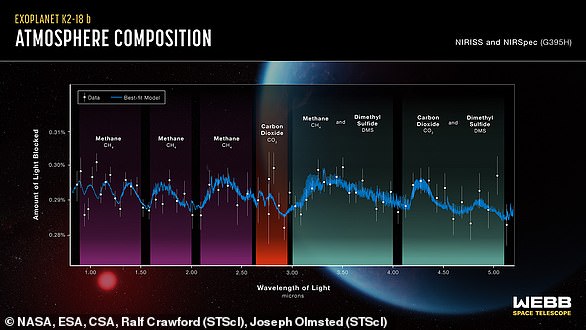Whether or not Earthlings are alone in the universe is a matter that has occupied the greatest of minds for centuries.
Now, a sensational discovery by Chinese scientists offers a promising clue that extraterrestrial life does in fact exist.
The astronomers have found a ‘super-Earth’ planet around 2,400 light years away where biological life could feasibly thrive.
Called Kepler-725c, the faraway world has 10 times the mass of Earth, according to the team from the Chinese Academy of Sciences in Beijing.
Excitingly, it’s located in the ‘habitable zone’ – a distance from its star where it is not too hot and not too cold for liquid water to exist.
It likely has liquid water on its surface, which hints at the possibility of carbon-based life similar to that on Earth.
Just like Earth, Kepler-725c is thought to be a rocky planet, possibly covered by a water ocean and exposed land.
‘Kepler-725 c might equally be a volatile-dominated water world,’ the experts report in a new paper.
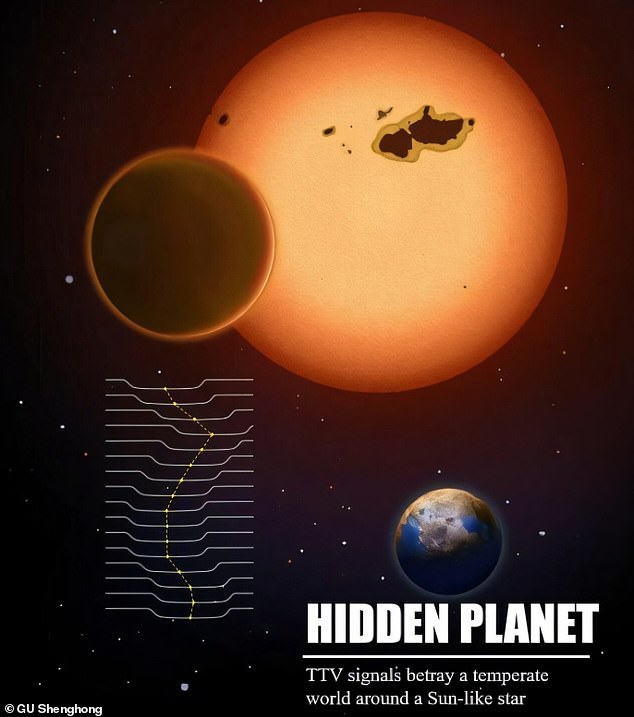
Artist’s view of the Kepler-725 system. The small planet in the lower right is the newly discovered super-Earth in the habitable zone
Kepler-725c completes one orbit of its star every 207.5 days, meaning a year there is shorter than a year on Earth.
Due to differences in its axis compared with our planet, the planet receives roughly 1.4 times the solar radiation that Earth does.
But this does not make Kepler-725c too hot to rule out the possibility of life existing on its surface, according to the researchers.
It’s been described as a ‘super Earth’ because it has a mass that’s higher than our home planet but lower than ice giants Uranus and Neptune.
It also travels in an eccentric orbit – a non-circular orbit where the distance between the orbiting body and the central body varies significantly.
The star, called Kepler-725, is significantly younger than our sun – only 1.6 billion years old, compared with our sun which is 4.6 billion years old.
Also in the same star system is Kepler-725b, a gas giant planet with a much shorter (39.64-day) orbit of the star.
As its name indicates, astronomers originally discovered the star system with the Kepler space telescope, a pioneering planet-hunting mission that launched in 2009. It spent nearly a decade in space looking for Earth-size planets orbiting other stars before being decommissioned in 2018.
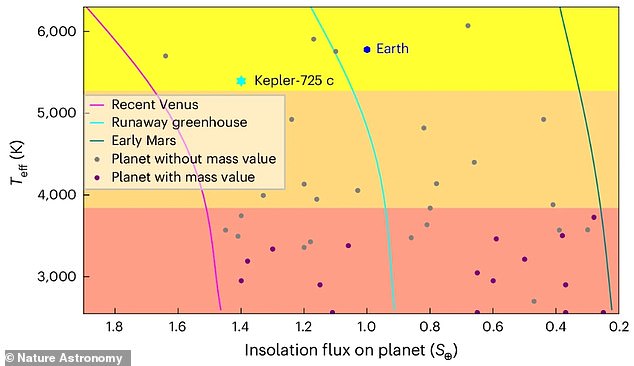
The exoplanet, Kepler-725c, has 10 times the mass of Earth and is located in the habitable zone of the Sun-like star Kepler-725
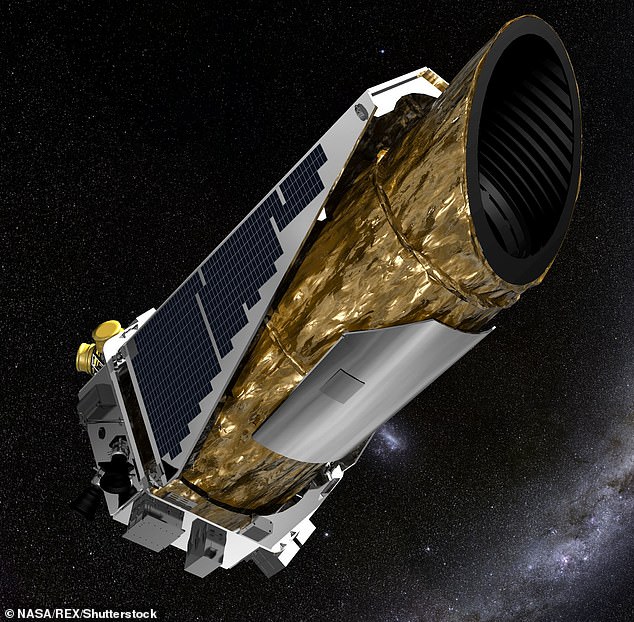
For their study, the researchers used data from NASA’s Kepler telescope, which would capture information about exoplanets while moving in front of their host stars 0 known as ‘transiting’. This is an artist impression of the Kepler Space Telescope that was decommissioned by NASA in 2018 after nearly a decade of service
Most ‘exoplanets’ (planets outside our solar system) are found by measuring the dimming of a star that happens when the planet passes in front of it, called the transit method.
Another method called radial velocity, also known as the wobble or Doppler method, can detect ‘wobbles’ in a star caused by the gravitational pull of an orbiting planet.
But the researchers made the discovery of this ‘super-Earth’ using a clever method called Transit Timing Variation (TTV), based on measurements from the Kepler space telescope.
TVV observes slight irregularities in the predicted transit times of an already-known transiting planet (in this case, Kepler-725b).
TTV is particularly well-suited for detecting small, long-orbital-period planets that are otherwise difficult to discover using the other two methods, the researchers say.
By analysing the TTV signals of Kepler-725b, a gas giant planet with a 39.64-day orbit in the same system, the team could infer information about Kepler-725c, including its mass and orbit.
Kepler-725c may belong to a new class of habitable super-Earths (alternatively known as ‘mini-Neptunes’) known as Hycean planets.
It has been proposed that Hycean planets, with massive oceans and hydrogen-rich atmospheres, could allow a ‘significantly wider discovery space in the search for potentially habitable planets’, the team say.

A super-Earth (depicted here) is a type of exoplanet with a mass higher than Earth, but substantially below those of the Solar System’s ice giants (Uranus and Neptune)
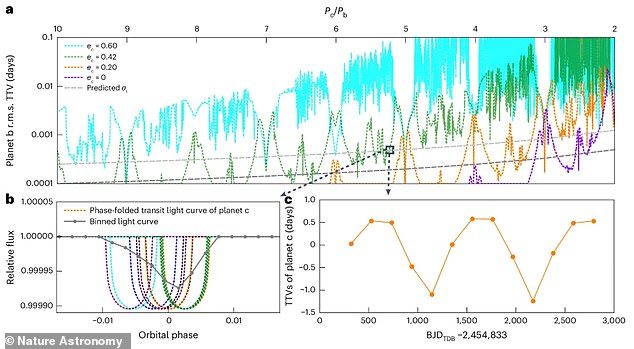
Researchers achieved a breakthrough by using the Transit Timing Variation (TTV) technique for the first time to discover a super-Earth
Their research, published in Nature Astronomy, marks the first time a planet in the habitable zone of a solar-type star has been discovered using the TVV method.
‘This discovery demonstrates that the transit timing variation method enables the detection and accurate mass measurement of a super-Earth/mini-Neptune within a solar-like star’s habitable zone,’ they add.
In 1995, the discovery of the first exoplanet orbiting a Sun-like star opened the door to exploring the profound mystery of if other life exists.
Thirty years later, the existence of extraterrestrial life is still yet to be confirmed, although recently scientists gave a tantalizing update about another planet, K2-18b.
K2-18b has large quantities of chemicals in its atmosphere that are suggestive of living organisms.

